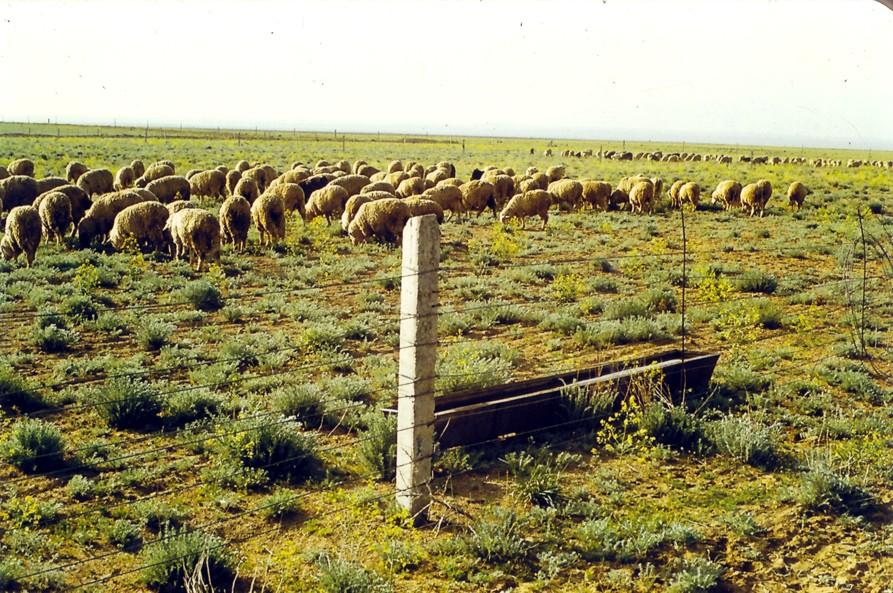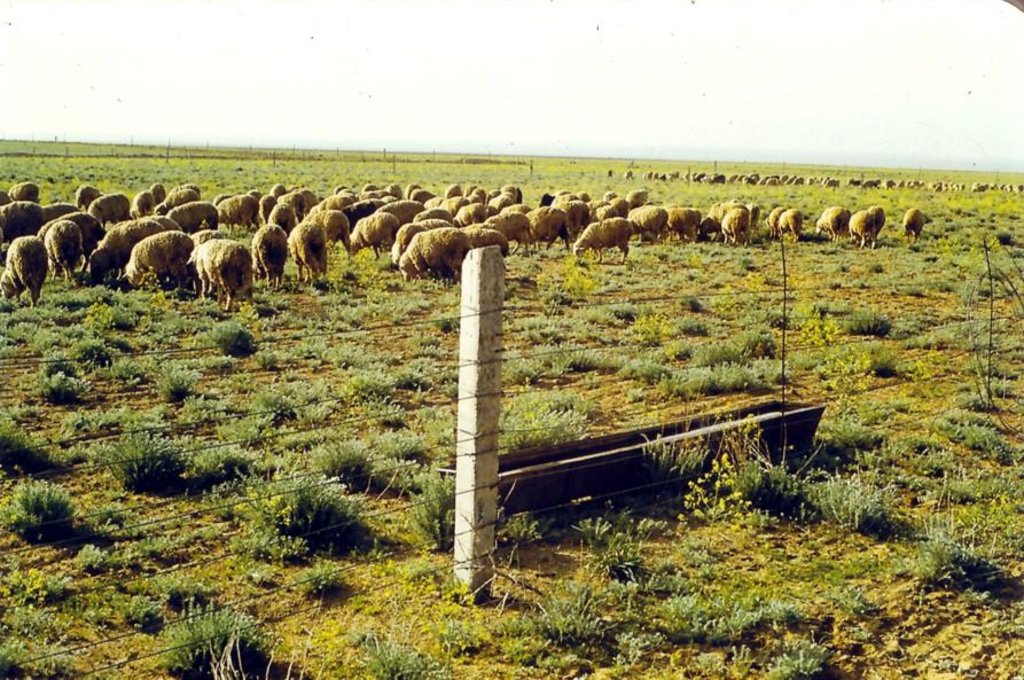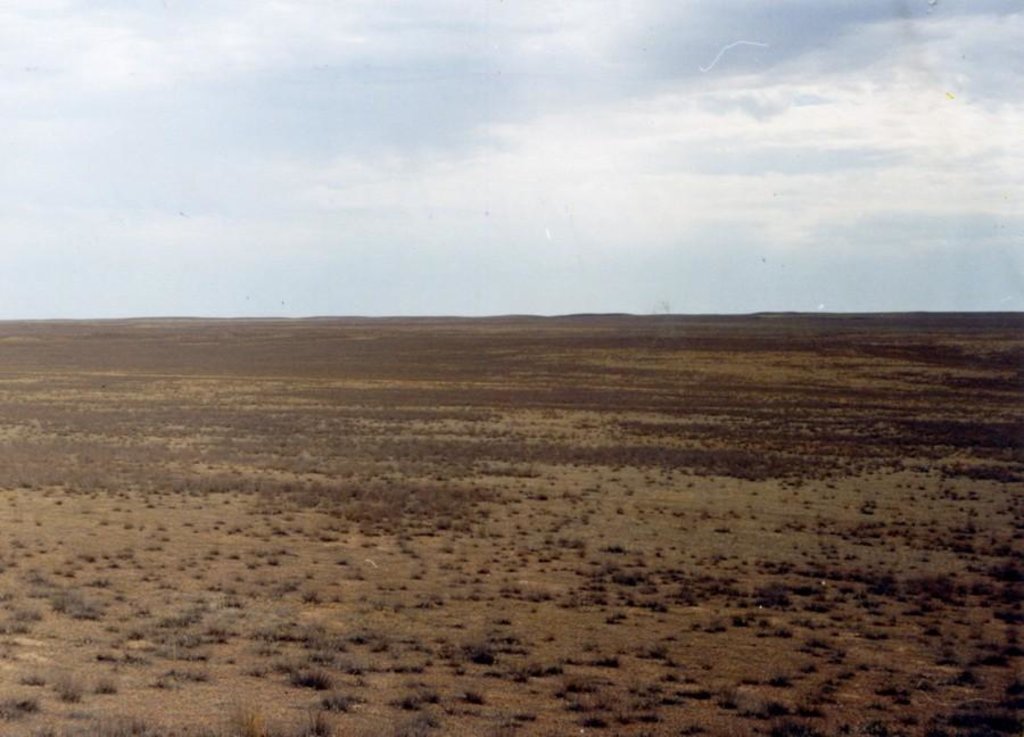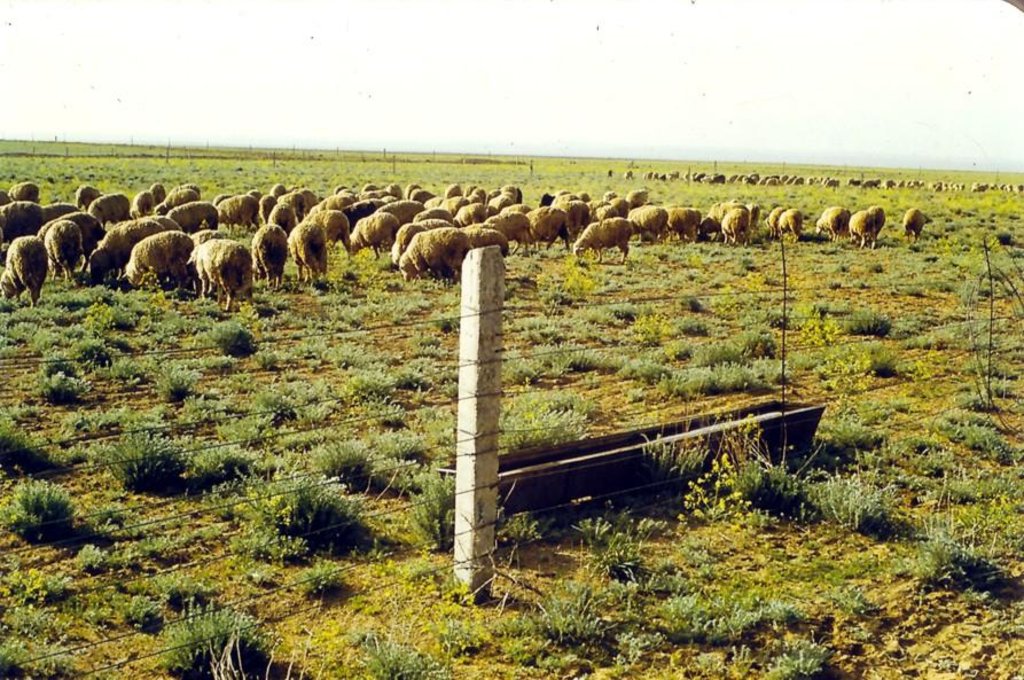Creation of sowed pastures from subshrubs and forbs able to use maximally the scanty water resources [Kazakhstan]
- Creation:
- Update:
- Compiler: Irina Skorintseva
- Editor: Hayot Ibrakhimov
- Reviewers: Fabian Ottiger, Rima Mekdaschi Studer
approaches_2362 - Kazakhstan
View sections
Expand all Collapse all1. General information
1.2 Contact details of resource persons and institutions involved in the assessment and documentation of the Approach
Key resource person(s)
SLM specialist:
Alimaev Ilya
+8(3272) 21-44-46
alimaev@nursat.kz
SPC for livestock husbandry and viterinary RK
51 Jandosov Str, Almaty 480035
Kazakhstan
SLM specialist:
1.3 Conditions regarding the use of data documented through WOCAT
The compiler and key resource person(s) accept the conditions regarding the use of data documented through WOCAT:
Ja
1.4 Reference(s) to Questionnaire(s) on SLM Technologies
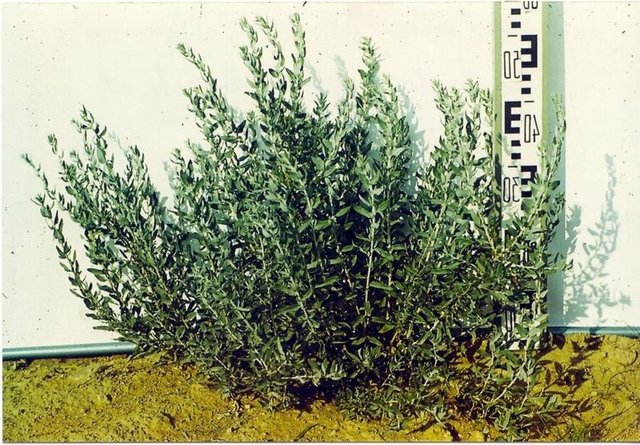
Creation of artificial pasturable phytocenosis at north desert … [Kazakhstan]
Selection fodder plants and the technology of their cultivation for maximal use of poor soil water in desert
- Compiler: Unknown User
2. Description of the SLM Approach
2.1 Short description of the Approach
Increase of use effectiveness of limited resources of soil moisture in desert with sowing xerophyte fodder plants
2.2 Detailed description of the Approach
Detailed description of the Approach:
Aims / objectives: Vegetation of North desert in modern condition is defective as cenosis owing to anthropogenic factor. Existing phytocenosis is characterized by low saturation of soil with plant organs. Therefore such cenosis can not use material resources of soil maximally (rootage penetrate into soil not more than 80 cm depth). Creation of sowed pastures with plant such as Kochia, Salsola, Artemisia, Ceratoides gives the possibility to use soil resources (first of all, moisture) more, better due to powerful rootage penetrating into soil up to 2.5 m). The method was approved and allows to increase productivity by 2-2.5 times. Studies in South Pribakhashye showed that in spring soil under degraded pasture contain 295-474 tons of productive moisture, 32-57 tons of humus,3-8 tons of common nitrogen per ha. At the same time association of sowed sbushrubs occupies soil layer 0-250 cm, what contains 652-1080 tons of productive moisture, 50-61 tons of humus, 11-52 tons of common nitrogen per ha. Degraded pastures could form 210 kg of dry matter per ha while pastures created on SWC-method - up to 580-600 kg per ha.
2.3 Photos of the Approach
2.5 Country/ region/ locations where the Approach has been applied
Country:
Kazakhstan
Region/ State/ Province:
South Pribalkhashye
2.6 Dates of initiation and termination of the Approach
Indicate year of initiation:
1974
Year of termination (if Approach is no longer applied):
1994
2.7 Type of Approach
- project/ programme based
2.8 Main aims/ objectives of the Approach
The Approach focused mainly on SLM with other activities (on SWC and increase of pasture productivity)
Creation of high productive pastures in place of finally degraded sites of vegetation
The SLM Approach addressed the following problems: Maximal use of moisture as limiting factor of growing and development of fodder plants in desert
2.9 Conditions enabling or hindering implementation of the Technology/ Technologies applied under the Approach
availability/ access to financial resources and services
- hindering
to implementation of technological processes because of shortage of seeds, machinery, petrol
Treatment through the SLM Approach:
legal framework (land tenure, land and water use rights)
- enabling
The existing land ownership, land use rights / water rights moderately helped the approach implementation: There was no this problem at implimentation of the method
3. Participation and roles of stakeholders involved
3.1 Stakeholders involved in the Approach and their roles
- local land users/ local communities
Farmers. Working land users were mainly women (The invited specialists of local community worked in creation and implementation of method)
- SLM specialists/ agricultural advisers
- national government (planners, decision-makers)
Ministry of Agriculture, oblast departments of agriculture
If several stakeholders were involved, indicate lead agency:
Pryamishnikov S. - selection of cultures and technology of cultivation. Jurchenko V. - selection of cultures and technology of cultivation. Alimaev Y - theoretical base of method, seliction of cultures and technology of cultivation.
3.2 Involvement of local land users/ local communities in the different phases of the Approach
| Involvement of local land users/ local communities | Specify who was involved and describe activities | |
|---|---|---|
| initiation/ motivation | external support | responsibility for minor steps, casual labour; mashine - operators of community local specialists |
| planning | none | |
| implementation | self-mobilization | responsibility for minor steps, casual labour; mashine - operators of community local specialists |
| monitoring/ evaluation | none | |
| Research | none |
3.4 Decision-making on the selection of SLM Technology/ Technologies
Specify who decided on the selection of the Technology/ Technologies to be implemented:
- mainly SLM specialists, following consultation with land users
Explain:
Before 1991 the use of method was carried out after consultation with specialists and land users by officials orders
4. Technical support, capacity building, and knowledge management
4.1 Capacity building/ training
Was training provided to land users/ other stakeholders?
Ja
Specify who was trained:
- land users
- politicians/decision makers
Form of training:
- demonstration areas
Subjects covered:
science of grosslands, manadement of pasture ecosystems
4.2 Advisory service
Do land users have access to an advisory service?
Ja
Specify whether advisory service is provided:
- at permanent centres
Describe/ comments:
Advisory service is totally inadequate to ensure the continuation of land conservation activities; Further development of marketing and introduction groups is needed in oblast departments of agriculture
4.3 Institution strengthening (organizational development)
Have institutions been established or strengthened through the Approach?
- yes, a little
Specify type of support:
- financial
4.4 Monitoring and evaluation
Is monitoring and evaluation part of the Approach?
Ja
Comments:
bio-physical aspects were regular monitored through observations
management of Approach aspects were ad hoc monitored through observations
There were no changes in the Approach as a result of monitoring and evaluation: Technological processes worked throw in details
4.5 Research
Was research part of the Approach?
Ja
Specify topics:
- economics / marketing
- ecology
- technology
Give further details and indicate who did the research:
Technological process was developed on a base of SWC - method and investigation on ecological and economical aspects of effects on nature and people were carried out
Research was carried out both on station and on-farm
5. Financing and external material support
5.1 Annual budget for the SLM component of the Approach
If precise annual budget is not known, indicate range:
- < 2,000
Comments (e.g. main sources of funding/ major donors):
Approach costs were met by the following donors: government (national - budget): 100.0%
5.2 Financial/ material support provided to land users
Did land users receive financial/ material support for implementing the Technology/ Technologies?
Ja
5.3 Subsidies for specific inputs (including labour)
- equipment
| Specify which inputs were subsidised | To which extent | Specify subsidies |
|---|---|---|
| machinery | fully financed | |
| tools | fully financed | |
- agricultural
| Specify which inputs were subsidised | To which extent | Specify subsidies |
|---|---|---|
| seeds | fully financed | |
| Seedlings and biocides | fully financed | |
If labour by land users was a substantial input, was it:
- voluntary
Comments:
at introduction of method the land was state property
5.4 Credit
Was credit provided under the Approach for SLM activities?
Nee
6. Impact analysis and concluding statements
6.1 Impacts of the Approach
Did the Approach help land users to implement and maintain SLM Technologies?
- No
- Yes, little
- Yes, moderately
- Yes, greatly
the technology of creation of sowed pastures
Did other land users / projects adopt the Approach?
- No
- Yes, little
- Yes, moderately
- Yes, greatly
this method is based on teoretical workings of proffesors Ramenskii L.G, Shamsutdinov Z.Sh, Kurkina K.D.
6.3 Sustainability of Approach activities
Can the land users sustain what has been implemented through the Approach (without external support)?
- uncertain
If no or uncertain, specify and comment:
Taking into account the value of carrying out of activities in 1 ha equals US$20-22 one can say only rich commodity producers can apply the method
6.4 Strengths/ advantages of the Approach
| Strengths/ advantages/ opportunities in the land user’s view |
|---|
| 1) it increases pasture fodder capasity |
| 2) it ceases soil erosion and improves ecological conditions |
| Strengths/ advantages/ opportunities in the compiler’s or other key resource person’s view |
|---|
| 1)Sufficiently simple technology (How to sustain/ enhance this strength: to work for reduction of technology price) |
| 2) it gives significant effect in increase pasture productivity |
| 3) it is able to localize centers of soil erosion. |
| 4) it promotes animal husbandry development |
| 5) it increases living standards of people |
7. References and links
7.1 Methods/ sources of information
- field visits, field surveys
- interviews with land users
7.2 References to available publications
Title, author, year, ISBN:
Pastures and hayland of Kazakhstan. Alimaev I. Isakov K. Almaty, 1998
Available from where? Costs?
Almaty, free
Links and modules
Expand all Collapse allLinks

Creation of artificial pasturable phytocenosis at north desert … [Kazakhstan]
Selection fodder plants and the technology of their cultivation for maximal use of poor soil water in desert
- Compiler: Unknown User
Modules
No modules


